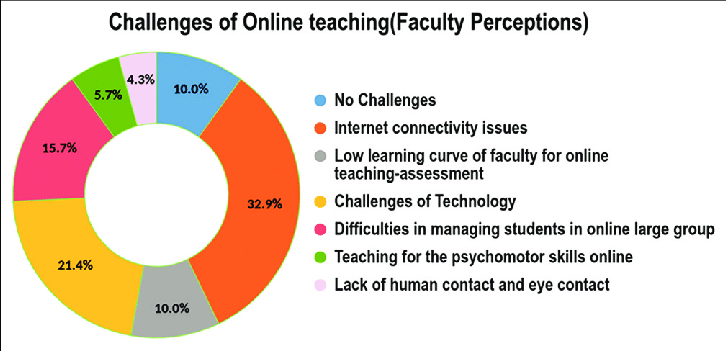Three Earthquake-level Changes in Seminary Education
From 1977 to 1981, I was a seminary student. From 1993 until the present, I’ve been an educator in graduate theological seminaries. Every level of education has been changed, most radically, since 1977. Here are three of the most significant changes I’ve seen and experienced in seminary life. There are many others, such as accreditation, evaluation, the shift from what we think we’re teaching to what students are learning, expanded staffs to raise endowments, what “diversity” means and who it includes and excludes, faculty composition and recruitment and institutional expectations, what are the ministry positions seminaries are preparing students for.
(My comments are limited to mainline Protestant seminaries. In the same time period, Catholic seminaries have also changed in many ways, not least of which are the expansion of programs for laity and educating priests who come from Africa and parts of Asia. Evangelical schools have expanded to include the majority of all seminary students in the U.S.)
The transformation of the word space to include digitally-created space is one of the most radical changes. In 1981, all classes were in-person. While it was not true that everyone who attended classes lived on campus or made the seminary a primary community, we studied in the same physical space. That also meant students had to move to seminary, or at least within a sustainable commuting distance. And potentially competing seminaries needed either to lure students their way or establish a branch campus. Professors lectured and taught Socratically as they had been taught. Doing research meant going to the library.
Today, a school anywhere can, potentially, be a competitor school anywhere. How a seminary can be a place of formation and not simply information is an endemic challenge. Students do not have to relocate in order to complete a degree (and oh what vituperative utterances I heard from seminary graduates of yesteryear when Phillips first moved assertively into the online space—as if students who did not move were not serious about their callings. Argh.)
 And faculty: no more pencil-written, margin-noted yellow legal pads. In addition to knowing their discipline and feeding their minds and professional obligations, faculty must learn digital teaching tools which themselves keep evolving. One might have assumed faculty were course designers, for they were and are. But having a course design specialist in a seminary is moving from luxury to necessity. And consider the challenges of recruiting when your students might come from anywhere and be able to attend dozens of schools! Marketing—connecting who and what you are with persons who would love to share in what a school has to offer—has never been more essential or more difficult for graduate theological education.
And faculty: no more pencil-written, margin-noted yellow legal pads. In addition to knowing their discipline and feeding their minds and professional obligations, faculty must learn digital teaching tools which themselves keep evolving. One might have assumed faculty were course designers, for they were and are. But having a course design specialist in a seminary is moving from luxury to necessity. And consider the challenges of recruiting when your students might come from anywhere and be able to attend dozens of schools! Marketing—connecting who and what you are with persons who would love to share in what a school has to offer—has never been more essential or more difficult for graduate theological education.
Second, throughout college and seminary, I learned the historical critical method of biblical studies: through history, archeology, word-studies, literary analysis, and establishing the Sitz im Leben—the life setting—one tried to imagine the meaning the text might have occupied with the original audiences, or at least the author or editor. Only then should one venture a hermeneutical tie to present-day faith communities. For at least my first decade as a theological educator, this historical-critical perspective challenged dozens and dozens of students raised without such tools to reconsider their fundamental assumptions about who Jesus was and is. Those tools were essential to the cognitive dissonance of theological education.
Today, the method that was and is meaningful for me has been identified for what it is: embedded with Anglo-Saxon, male, privileged assumptions about, well, nearly everything, but especially important are the assumptions about the centering of one’s own social location as THE God’s eye context, about what reason and rationality mean, about spirituality (inferior to reason), progress and evolution of thought.
Back in 1981, liberation theologies were known and developing. Whether the matrix of development was Latin American, Black America, Native America, or feminism, liberation theologies assumed the dominance of German theological methodology for biblical studies and theology. Those liberation theologians had to address the North American, Northern European cultural contexts in order to push off from them and show what theology and studying the Bible looked like from local communities, including “the least of these.” Today, theology done from within local communities, sometimes at the intersection of salient social boundaries and sometimes from within a very particular community, occupies much more space in seminary classes and on library shelves/databases. Historical critical study is not gone but it and the communities and timeframes it privileged are simply options among the many, vibrant possibilities for connecting with scripture, making meaning, and seeking liberation for abundant life.
A third major change I’d identify is this: ministry today is very, very difficult. When I graduated seminary in 1981, I assumed I could have a career in ministry. I’d be appointed to a first church, and then a bigger one, and then a bigger or different one, at least a lateral move. I would have been wrong about the path but the assumption about having a career was not unreasonable. What I did not consider then, in addition to the huge matter of my move from congregational ministry to higher education, included the following:
- The decline of the mainline church, begun in the middle 1960s, would not abate. There is no longer a pyramid of appointments; middle sized churches are nearly gone and many, but not all, larger churches carry fewer staff. (Most mainline seminaries could not survive today without both an ecumenical student body and distance education. We mainliners still have almost as many seminaries as we did when we had double the membership.)
- The multiplication of women and racial-ethnic minorities into ministry (women regularly comprise more than 50 percent of enrolled students), and the (in some places) opening appointments to cross-cultural and cross-racial candidates, mean more competition for the “best” appointments than my younger, privileged-blindered self assumed would have been in line for me.
- There was certainly polarization in church and society in 1981. And there were, as there have always been, unbalanced persons who could, in a volunteer organization, wreak havoc and chaos with everyone waiting for the pastor “to do something.” But that polarization is nothing like today, driven by moral emotions tied to partisan politics. The rise in church conflict through the decades, as also churches were being displaced from their previously privileged cultural positions while congregational memberships were also in many cases decimated, has taken a great toll on clergy. After all, I’ve been a member of a denomination in numerical decline since I was 10 years old. I don’t remember talking much about “pastoral resilience” in 1981, and we were not encouraged in seminary to develop and embody spiritual practices, other than prayer and Bible study. One of my classmates told me recently only a handful of the 50 or 60 have worked until retirement age in an identifiable ministry. Most of us left. We have not been the most resilient cohort.
Teaching and, even more, training persons to be more resilient, need spaces in either the seminary’s curriculum or in a denomination’s ministerial formation programs, or both.
Dr. Gary Peluso-Verdend is president emeritus at Phillips Theological Seminary and is the executive director of the seminary’s Center for Religion in Public Life. The opinions expressed in this blog are those of the author. Learn more about the Center’s work here and about Gary here.


Comments are closed.